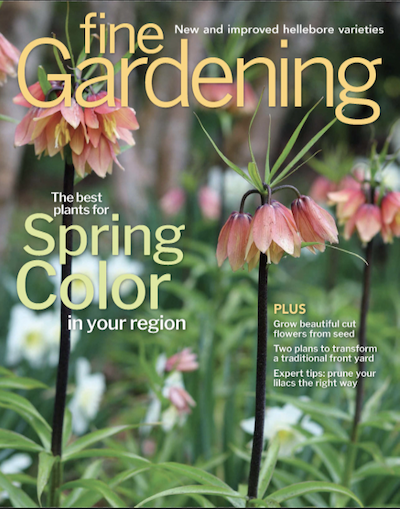Matt Mattus
-
Northeast Regional Reports
How to Grow Tree Peonies in the Northeast
We gardeners in the Northeast are notorious for complaining about the weather, particularly about our cold, snowy winters and what often seems like too-short, too-hot summers, yet this four-season climate…
-
Northeast Regional Reports
How to Train Wisteria
Few plants can put on a spring show as elegant and impressive as wisteria (Wisteria spp. and cvs., Zones 4–9), but like many vines, this plant can be aggressive. Thankfully,…
-
Northeast Regional Reports
Corydalis Is an Underappreciated Spring Star
Early spring-blooming bulbs are very welcome in any garden, yet one genus seems to be overlooked by many of us, although it’s just as impressive as all the others. The…
-
Northeast Regional Reports
Five Perennials That Are Easy to Grow From Seed
The reasons one should start perennials from seed are many. The most obvious one is the cost savings. Many gardeners focus on seed-starting annuals and vegetables because they think those…
-
Northeast Regional Reports
Growing Artichokes in the Northeast
The artichoke that is cultivated as a vegetable is a variety of cardoon (Cynara cardunculus, Zones 7–10), or artichoke thistle, a thistle-type perennial in the sunflower family that’s native to…
-
Northeast Regional Reports
Growing Currants and Gooseberries in the Northeast
Soft fruits like currants and gooseberries (which are related, as they are both within the genus Ribes) are often overlooked fruits for Northeastern gardens. These are very hardy fruits (some…
-
Northeast Regional Reports
Easy-Care Grasses for the Northeast
Grasses are often overlooked in Northeastern gardens. Most grasses look rather uninteresting in spring, which is when many of us buy plants for the garden. However, a trip to a…
-
How-To
How to Grow Sweet Peas
Fragrant, old-fashioned sweet peas were very popular cut flowers in the late nineteenth and early twentieth centuries, but then they fell out of favor for nearly a hundred years. With…
-
Article
This Hoe Is an Upgraded Classic
You’ve got to be impressed when a classic tool is reinvented. This collinear hoe designed by Eliot Coleman has become my go-to tool for the vegetable garden. I use mine…
-
Northeast Regional Reports
The Best Hollies for the Northeast
Holly (Ilex spp. and cvs., Zones 5–9) remains underused in many gardens in the Northeast, yet few trees and shrubs offer as many benefits as hollies do. The popular English…
















